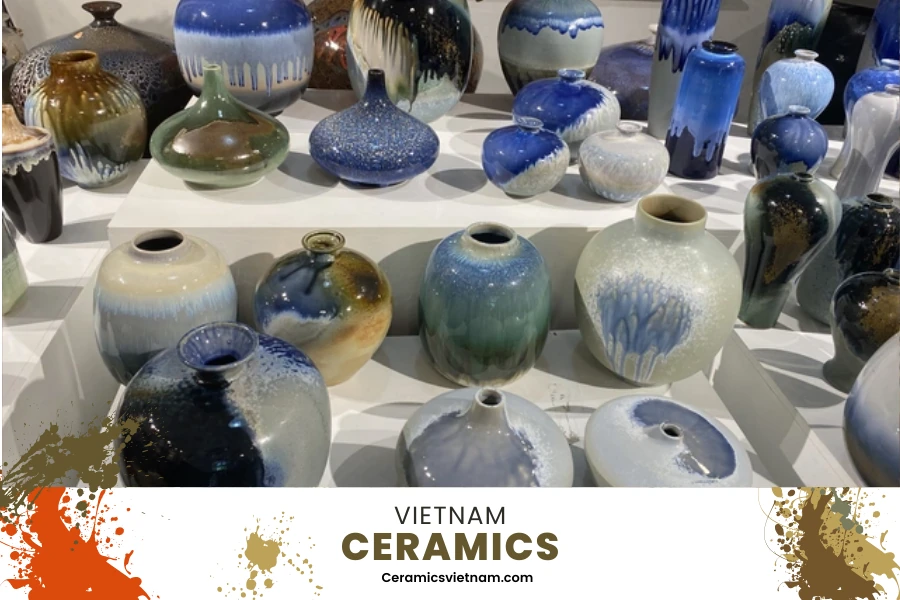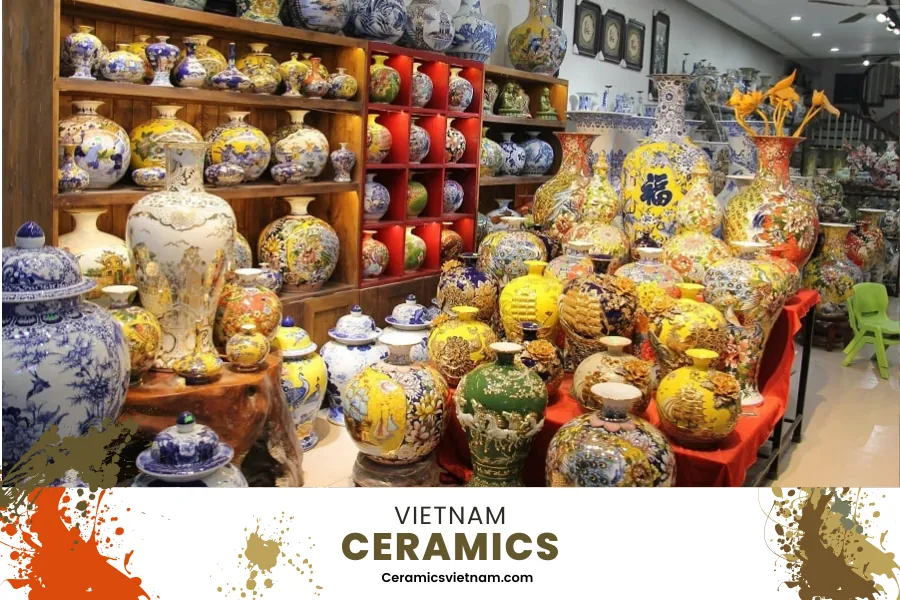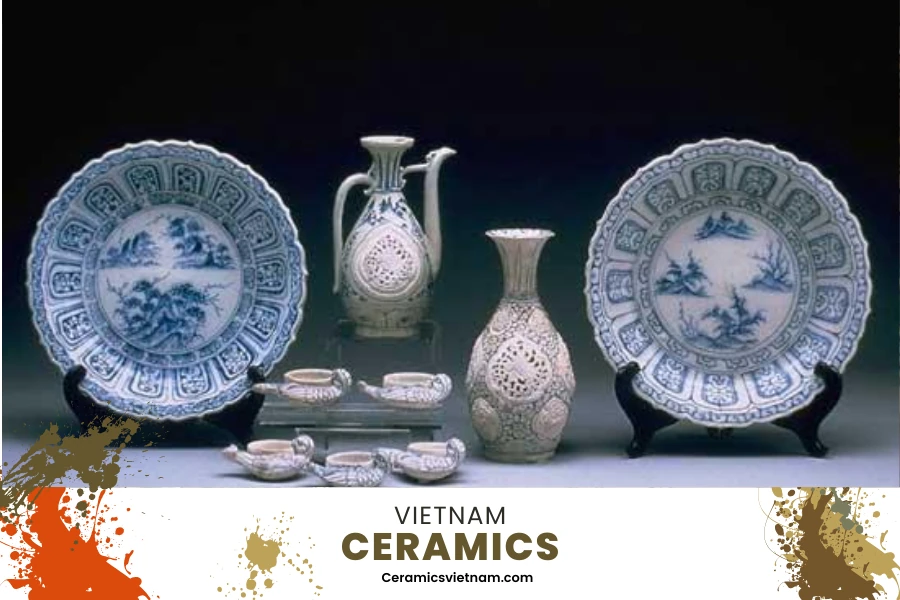With its rich history and distinctive craftsmanship, Vietnamese ceramics have garnered increasing attention on the international stage. As globalization continues to reshape trade dynamics, the prospects of Vietnamese ceramics in the international market have become a subject of growing interest and exploration. Let’s find out with CeramicsVietNam in the article below.
Prospects of Vietnamese Ceramic in the international market

Prospects of Vietnamese Ceramic in the international market
Vietnamese ceramics are increasingly gaining recognition and prominence not only in the Asian region but also globally. The products crafted by Vietnamese ceramic artists on traditional clay materials steadfastly uphold the unique and distinctive spirit of Vietnamese ceramics, embodying the nation’s cultural identity. Over the years, many Vietnamese ceramic artists have played a pivotal role in solidifying Vietnam’s position in the international market, thanks to their relentless creativity and innovation rooted in the essence of traditional ceramic artistry. In the era of globalization, Vietnamese ceramic artists are actively expanding the reach of Vietnamese ceramics through large-scale projects that involve cultural exchange and collaboration with other civilizations. This effort contributes to the growing presence and reputation of Vietnamese ceramics in the Asian and global markets. Let’s delve into the far-reaching prospects of Vietnamese ceramics through the following discourse.
In Asia, we are accustomed to seeing a plethora of Japanese and Chinese ceramic products dominating the market. These ceramics are prevalent in Vietnam and the broader Asian market due to their affordability, aesthetic appeal, and quality. However, when compared to Vietnamese ceramics, they lack the distinctiveness and uniqueness that characterize Vietnamese ceramics such as those from Phu Lang and Bat Trang.
Vietnamese Ceramic vs. Japanese Ceramic
Japanese ceramics have inundated the market in Southeast Asia and Asia as a whole. In Vietnam, Japanese ceramics are widely known and popular due to their affordability and ubiquity. While Japanese ceramics feature traditional motifs and patterns inherent to Japanese culture, Vietnamese ceramics stand out with their luminous glazes, durable colors, and creatively patterned designs, maintaining a steadfast position among ceramic enthusiasts.
Vietnamese Ceramic vs. Chinese Ceramic
Chinese ceramics are renowned for their intricate artistic craftsmanship and distinguishable patterns, boasting a rich history spanning over 10,000 years. Notably, Cang Duc Tran ceramics, with a history of over 1600 years, exemplify ancient Chinese culture with their exquisite craftsmanship, prominent designs, superb quality, and reasonable prices. Despite Western attempts to emulate ceramic production since the 18th century, Chinese ceramics continue to be widely used in Europe and Islamic countries. This tradition forms a cultural bridge between East and West, reminiscent of the Silk Road, facilitating cultural exchange during ancient times.
The enduring qualities of Vietnamese ceramics, including its elegant, sophisticated colors and its practical durability, distinguish it from ceramics of other Asian countries. While Vietnamese ceramics may command a slightly higher price, they offer superior quality, diverse designs, and colors tailored to individual preferences. On the other hand, Chinese ceramics often prioritize mass production over quality, relying on decal patterns and superficial glazing techniques. As a result, Vietnamese ceramics maintain their uniqueness and appeal, offering consumers a sense of craftsmanship and longevity that is unparalleled.
Moreover, Vietnamese ceramics strike a balance between affordability and quality, catering to a wide range of consumers. Each piece is meticulously handcrafted, ensuring uniqueness and individuality that cannot be replicated. This emphasis on craftsmanship and quality ensures consumer satisfaction and contributes to the enduring popularity of Vietnamese ceramics in the international market.
In conclusion, the prospects of Vietnamese ceramics in the international market are promising, thanks to their unique characteristics, creative designs, and commitment to quality. Despite facing challenges such as competition from Chinese ceramics and labor shortages, Vietnamese ceramics continue to captivate consumers with their elegance, durability, and cultural significance. With ongoing efforts to preserve traditional ceramic artistry and foster innovation, Vietnamese ceramics are poised to thrive and make a lasting impact on the global stage.
Prospects of propelling Vietnamese Ceramics into the international market

Prospects of Vietnamese Ceramic in the international market
Vietnam currently boasts 12 craft villages preserving the traditional art of ceramics. Some renowned villages include Bat Trang Ceramic Village (Gia Lam), Phu Lang Ceramic Village (Bac Ninh), Bo Bat Ceramic Village (Ninh Binh), Long Phuong Ceramic Village (Bac Ninh), Tho Ha Ceramic Village, Chu Dau Ceramic Village (Hai Duong), Tan Van Ceramic Village (Dong Nai), Phuoc Tich Ceramic Village (Hue), Bau Truc Ceramic Village (Ninh Thuan), Thanh Ha Ceramic Village, and Tan Phuoc Khanh Ceramic Village (Binh Phuoc).
Bat Trang pottery village, located on the banks of the Red River, about 10 kilometers southeast of Hanoi’s city center, is one of the most famous pottery villages in Vietnam. With a history dating back hundreds of years, Bat Trang has long been renowned for its traditional ceramics craftsmanship and exquisite products.
The Vietnamese people, among the earliest civilizations after the Common Era, have a rich history of nation-building and preservation. With a history spanning over four thousand years, from the Van Lang era to the vibrant Dong Son civilization, Vietnamese artistry has achieved remarkable success in the field of ceramics.
Vietnamese ceramics flourished throughout history, from the Phung Nguyen, Dong Dau, and Go Mun periods to the pinnacle of the Dong Son era. The ceramic art culture during the Dong Son period, under the Van Lang kingdom of the Hung Kings, Au Lac, and Nam Viet, served as a conduit for the development of bronze artifacts.
Japan, with its longstanding history of ceramic craftsmanship, has propelled Japanese ceramics onto the global stage. Japanese ceramic vessels and pottery are not only renowned domestically but also globally for their distinctive characteristics. Japanese ceramics exude elegance, antiquity, and a unique charm. Considered one of the oldest forms of handicrafts, Japanese ceramics are meticulously crafted, intricate, and refined, influenced significantly by the tea culture. Japanese ceramic artisans have developed sophisticated techniques to create unique structures, shapes, and colors, utilizing natural glazes and firing methods. Furthermore, Japanese ceramics are closely intertwined with nature, incorporating various natural elements such as flowers, leaves, and animals into their designs.
The collaboration between Japanese ceramics and Vietnamese ceramics from Phu Lang, Bac Ninh, serves as the focal point of a ceramic project that Japanese artisans are passionate about. Onimaru Yukuse, a Japanese ceramic artist from Onimaru Setsuzan Kamamoto Co., Ltd., Fukuoka, Japan, initiated a pottery revival project for artisans in Phu Lang, Bac Ninh. The first batch of pottery, totaling 1000 pieces, demonstrates the effectiveness and potential for development in the Japanese market.
Onimaru aims to expand the reach of these products, combined with Phu Lang ceramics, to other markets worldwide, such as Europe or America. In this project, the Japanese artisan also advocates for the construction of new kilns to conserve fuel and firing time.
Vietnamese ceramics are intertwined with the daily lives of the Vietnamese people, serving as witnesses to the nation’s history, developing along the tide of national history, flourishing and declining. The Vietnamese ceramic industry, in particular, and Vietnamese artistry, in general, have witnessed periods of prosperity, contributing to the collective civilization of Asian nations and humanity as a whole. The innovative techniques in glazing and the diverse array of unique styles and characteristics embodying the spirit of Vietnamese ceramics will endure in the developmental memory of global ceramic artistry.












Leave a reply